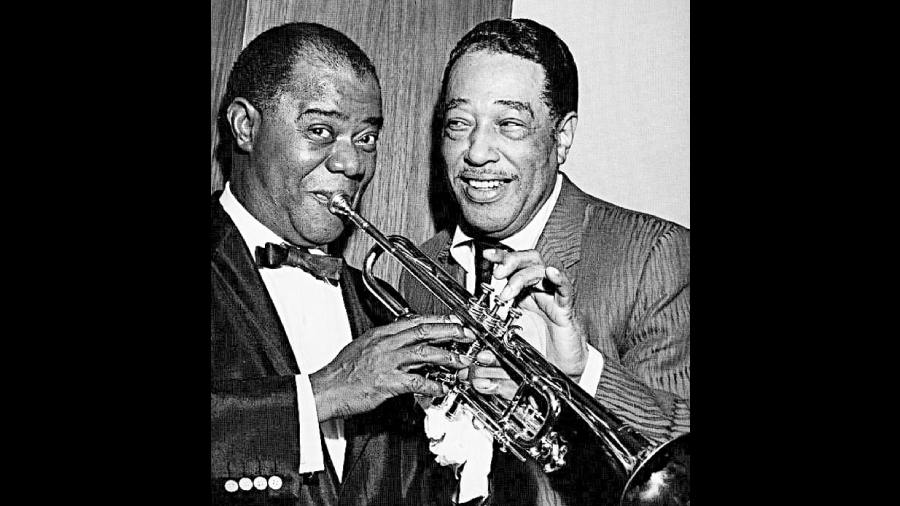When Louis Armstrong passed away in 1971, the great Duke Ellington had the last word when it came to the trumpeter’s contribution to music and American culture: “If anybody was Mr. Jazz it was Louis. Armstrong. He was the epitome of jazz and always will be. He is what I call an American standard, an American original.”
The “American original” is captured in full glory in a new documentary — Louis Armstrong’s Black & Blues, streaming on Apple TV+ — tracing the artiste’s journey from a rough childhood in New Orleans to his final days in New York City’s Queens neighbourhood.
A master showman known to millions as Satchmo, the legendary musician lived by a simple credo — live for the audience, which he did with his sandpapery singing voice and merrymaking style on the trumpet.
Collective versus the individual
He left New Orleans for Chicago with a unique take on the jazz art form — turning raw, gutsy music that was heard at funeral parades and honky-tonks to something of socio-cultural significance for all corners of America and beyond. Then came his departure from the Oliver Creole Jazz Band, which is an historical event. His departure from Chicago was also, in a way, symbolic of the fact that the most fertile period for jazz in Chicago was finished and that the jazz capital was moving to New York. He moved jazz to a new era in which the ascendancy of the soloist began.
Primitive jazz was a communal, collective music and it only allowed “breaks” or solo-like statements by individual players. Jazz, even at the time of Oliver’s Creole Band, was still a matter of collective improvisation. What Armstrong presented was individual expressions and it was first heard in his recordings with a small group known as the Hot Five. With King Oliver, it was about the band but with Hot Five, you listen first to Louis.
The documentary isn’t only about what made Armstrong a jazz pioneer, it is about what he had to endure to becoming a cultural ambassador of the art form.
“Pops, he faced a lot of challenges, and he always faced them with style and maintained his sanity and his joy and his embrace of life. And it was not a simpleminded happiness. It was a transcendent joy,” Wynton Marsalis is heard saying in the film.

Louis with Duke Ellington
The cultural ambassador
The film’s director Sacha Jenkins (and his team) packs in plenty of interesting archival footage to capture the complexities of life he had to face. In private, he was a dedicated supporter of the civil rights movement but, at the same time, he kept the topic to himself during press interviews.
He was also engaged with promoting American culture beyond his country’s boundaries. Starting in the mid-1950s, the State Department began sending jazz musicians like Dizzy Gillespie, Dave Brubeck, Duke Ellington and Armstrong on tours abroad as good-will ambassadors. The idea was to highlight jazz as a uniquely American art form and it came at a time when the Russians used ballet troupes to show off their culture. Wherever they went, their music was received enthusiastically.
This was the man who in 1964 replaced the Beatles’ Can’t Buy Me Love at the top of the charts with Hello, Dolly! This was the man who performed in Mumbai months after the hit single released — at Shanmukhananda Hall and at Rang Bhavan.
Keeping talking heads to a minimum, we hear unseen speakers over film clips of historic importance. The vocal snippets from the likes of Wynton Marsalis, Miles Davis and Leonard Bernstein are riveting and so are the lighter moments captured in the film, like giving away coal to the poor at the some gigs and his use of laxatives (Armstrong drank a product called Pluto Water, a spring water said to have laxative properties, and later Swiss Kriss).
Louis Armstrong’s Black & Blues is a film that’s personal and thrilling. Like the music of Satchmo, the film enjoys the freedom of moving around the man’s life without become a dry montage of milestones. Most importantly, the film introduces youngsters to the world of Pops, as he was called.
Louis Armstrong’s Black & Blues is streaming on Apple TV+











